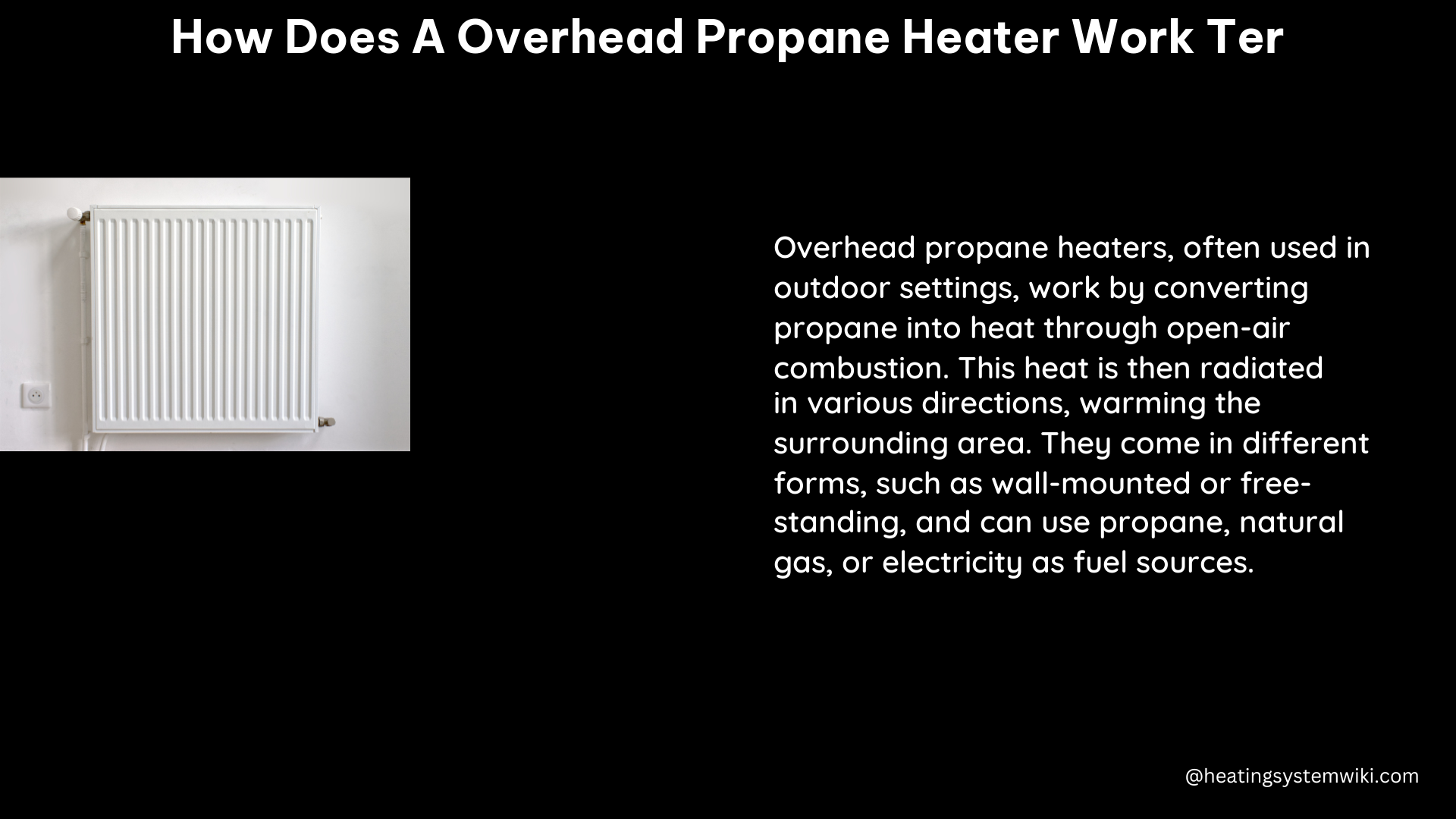An overhead propane heater, also known as a ceiling-mounted propane heater, is a heating system designed for outdoor use. It works by converting propane gas into heat through a heating element or lamp, which then transmits the heat through infrared electromagnetic waves. These waves travel through the air until they reach an object, where they are absorbed and converted into warmth, similar to how the sun heats objects and people.
Understanding the Mechanism of Overhead Propane Heaters
Overhead propane heaters are designed to provide efficient and targeted heating for outdoor spaces, such as patios, decks, or commercial settings. The key components that enable their operation are:
-
Propane Gas Supply: The heater is connected to a propane gas source, typically a 20-lb propane tank, which provides the fuel for the heating process.
-
Heating Element or Lamp: The heart of the heater is the heating element or lamp, which is responsible for converting the propane gas into heat. This component is usually made of ceramic or metal and is designed to withstand high temperatures.
-
Infrared Radiation: The heating element or lamp emits infrared electromagnetic waves, which travel through the air and are absorbed by objects and people in the surrounding area. This process is known as infrared heating, and it is highly efficient in outdoor settings where there is minimal obstruction or interference.
-
Reflector: Many overhead propane heaters are equipped with a reflector, which is a curved or angled surface that helps to direct the infrared waves downward, ensuring a more focused and even heat distribution.
-
Thermostat and Controls: Overhead propane heaters often come with built-in thermostats and controls, allowing users to adjust the heat output and temperature to their desired settings.
Installation and Placement Considerations

Proper installation and placement of an overhead propane heater are crucial for its safe and efficient operation. Here are some key considerations:
-
Ceiling Height: Overhead propane heaters are designed for areas with higher ceilings, typically 8 feet or more. This allows the infrared waves to effectively reach the desired heating area without obstructions.
-
Mounting Methods: There are several methods for hanging an overhead propane heater from the ceiling, such as using a light rope over a ceiling 2×4 and hooking it onto an eye bolt in the top of the heater, or using pallet racking set up at the right height to allow for the use of a Jiffy Jack to raise and lower the heater.
-
Clearance and Ventilation: Overhead propane heaters should be positioned on stable surfaces, away from flammable materials, and with adequate clearance to prevent fire hazards. Proper ventilation is also essential, especially in enclosed areas, to prevent the buildup of harmful gases like carbon monoxide.
-
Professional Installation: It is recommended to coordinate the installation of an overhead propane heater with trained professionals, such as plumbers, gas specialists, and HVAC technicians, to ensure proper and safe installation.
Technical Specifications and Efficiency
Overhead propane heaters are designed to provide efficient and powerful heating for outdoor spaces. Some key technical specifications and efficiency considerations include:
-
BTU Rating: A standard gas patio heater can consume between 20,000 to 40,000 BTUs (British Thermal Units) per hour, with higher BTU ratings indicating more powerful heating output.
-
Propane Tank Capacity: Using a 20-lb propane tank, which typically holds about 430,000 BTUs, an overhead propane heater could last between 10 to 20 hours of continuous use, depending on the heater’s BTU rating and efficiency.
-
Infrared Heating Efficiency: Infrared heating is highly efficient in outdoor settings, as the waves travel directly to the objects and people in the heating area, minimizing heat loss to the surrounding air.
-
Maintenance and Safety: Regular maintenance, including checking for leaks and ensuring secure connections, is crucial for the safe and efficient operation of an overhead propane heater. Proper placement, ventilation, and adherence to safety guidelines are also essential.
By understanding the technical details and best practices for installing and operating an overhead propane heater, users can ensure a safe, efficient, and enjoyable outdoor heating experience.
